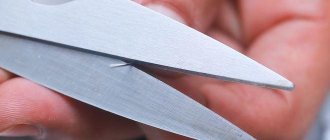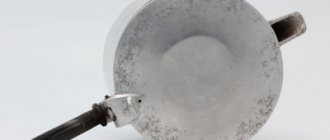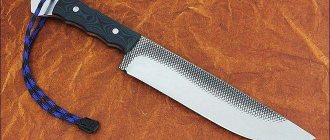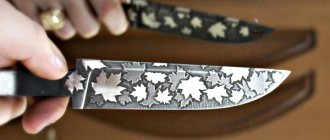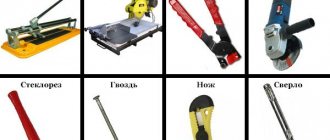High-quality forged serving sets made of cupronickel are valued on a par with silver. Ductile metal lends itself well to processing; real works of art are created from it. Over time, an exquisite design becomes overgrown with blackness, the alloy fades, and loses its former splendor. The review contains the best methods to help clean cupronickel spoons and forks at home. Products that can be found in every kitchen or medicine cabinet will help restore your dishes to their former appearance. Folk remedies have been tested for years and can be trusted.
Cutlery is an important part of a perfect table setting.
Advantages and disadvantages
Cupronickel is an alloy of copper and nickel, which can be supplemented with other components. They can be iron or manganese.
In appearance, the material is very similar to silver, but the cost of such cutlery will be much lower.
The main advantages of this metal are:
- Price. This is a great alternative to silverware. Therefore, if you want to impress your guests with spoons, forks and knives with an aesthetic appearance at an optimal cost, then cupronickel will be an excellent solution;
- Low level of thermal conductivity. The material heats up very slowly. Thus, the likelihood of getting burned is minimized, which is very important when consuming hot foods and drinks;
- Corrosion resistance. Cupronickel is a stainless material, so it will have a long service life.
Despite its positive characteristics, the material has several disadvantages:
- Fast oxidation. This reaction leads to the formation of a black coating and loss of shine;
- Need for constant care. In order for the material to maintain its original appearance for a long time, every housewife should know what care products can be used.
What can't you do to clean gold plate?
Any products used should not contain abrasive particles. Even the smallest particles can severely damage the spray. For example, you should not clean gold plate with chalk, toothpaste, soda or powder.
Any abrasive product will cause scratches.
Some products are coated with a very thin layer of coating; abrasives easily erase it. Do not use rough scourers or brushes, or aggressive acids for cleaning.
Why does cupronickel turn black?
The reason for the appearance of black plaque is the presence of 50% copper in cupronickel. This metal tends to oxidize easily.
Even though the other half of the alloy is manganese, nickel and iron, they will not be able to cope with such a strong reaction.
Therefore, as a result of oxidation, small brown spots initially appear, which then begin to darken, gradually acquiring a black tint.
Getting rid of it is not easy, however, by purchasing professional products or preparing them from available ingredients, you can protect spoons, forks and knives from their appearance.
To protect your devices from the appearance of such plaque, the housewife is required to follow the rules of care.
Egg shell decoction for darkened products
This effective method can remove even very old stains and clean cupronickel forks, knives, and spoons without any problems or effort.
Need to use:
- Boiled water – 1 liter;
- Table salt - a tablespoon;
- The shell of two chicken eggs.
How to clean cupronickel cutlery from eggshells:
- Grind the shells to a powdery state;
- Pour water into a shallow flat container and place it on the flame;
- After the water boils, add shells and salt to it;
- Place the utensils in hot water and boil for 2 minutes;
- Then we take them out, rinse them under running water and wipe them with a soft cloth.
Traditional folk methods
Cleaning with baking soda and alcohol
This method can be used at home. To do this you need the following components:
- 1 liter of warm water;
- 50g of soda or 50 ml of ammonia.
Baking soda and alcohol have the ability to not only remove dirt and plaque, but also restore the original shine of any surface.
To do this, dissolve the selected component in water and thoroughly wash the devices in it. Once all dirt and stains have been removed, rinse them off.
After this, wipe them with a cloth until the moisture is completely removed to prevent the oxidation process.
You can also use pure alcohol or vodka. To do this, dip spoons and forks into one of the liquids. Wait until stains and dirt begin to dissolve.
Vinegar solution
To do this, dissolve 1 teaspoon of concentrated vinegar in 200 grams of warm water (if you add more, the surface may be damaged). Dip a napkin and wipe the forks and spoons until the dirt and residue are completely gone.
Cleaning with chalk
To do this, the housewife needs to prepare a mixture that will consist of:
- 50 grams of regular laundry soap;
- 50 g chalk;
- 1 liter of water.
All ingredients must be mixed in a glass container until completely dissolved. After this, you can begin cleaning. Once the stains are removed, wash the appliances and dry them with a cloth.
You can also prepare a solution that will contain:
- 2 glasses of water;
- 50 g chalk;
- Ammonia. It should be added in proportions of 30:60.
Thus, it turns out to be a good product for adding shine and creating a protective layer.
Removing stains with potato decoction
If you have broth left after boiling potatoes, you can use it for peeling.
To do this, bring it to a boil and put the products in it. Hold them for 20 minutes. After this, you need to thoroughly rinse the spoons and forks and dry them.
Solution with added garlic peel
Take the garlic skin and add it to a pan of water. Bring to a boil, then add spoons and forks. Once all dirt and stains have been removed, you can rinse and wipe.
Cleaning with foil
According to many users, this method of cleansing is considered the most effective. To do this, you need to put foil on the bottom of an ordinary aluminum pan or other container. Then place cutlery on it and fill it with soda solution. Bring to a boil.
Foil has the ability to absorb any contaminants, including black deposits. However, if your product is gold or silver plated, then it is best to abandon it and choose a more gentle method.
Removing stains with toothpaste
Apply toothpaste to a cotton pad and wipe the appliances with it.
Preparation of a decoction of ground shells
To do this, prepare:
- Shells from two eggs;
- One tablespoon of salt;
- 1 liter of water.
Grind the shells in a coffee grinder and add table salt to it. Combine all ingredients with water and put the mixture on fire. Place cutlery in the prepared broth and boil for two minutes. After this, rinse them and wipe them dry.
Solution with added Sodium Sulfate
To do this, dilute the medicine in water in proportions 1: 3. Next, use a cotton swab to wipe each product.
Cleaning with soda
To do this, you need to buy regular soda, then pour it over the products and keep them for 2 hours.
How to remove black stains from silver-plated or gold-plated appliances
The following methods work well for this:
- A solution prepared with the addition of turpentine;
- Egg white treatment.
How to restore shine to cupronickel cutlery
Even when stored in a dry place, cupronickel dishes become covered with an oxide film, the alloy becomes dull and unattractive. Traditional methods will help your serving items regain their former beauty. One of them is raw potatoes. The root vegetable is cut and the cutlery is wiped with the halves. After this, the metal is rinsed and wiped.
If the potatoes do not help, the sparkle of cupronickel spoons, knives and forks is restored in other ways.
Chalk
A soft natural mineral is used as a polishing agent. The powder is applied:
- on wool;
- fleece;
- flannel;
- suede
Wipe the dishes until they shine. The fabric must be fibrous and loose.
The darkened chalk will remain, but the cupronickel will shine.
Important! You need to use ready-made powder or first sift the crushed chalk through a fine flour sieve. Ladies' powder will be a good replacement for chalk.
Pasta
An excellent processing principle for the lazy: just cook serving nickel silver along with any pasta. You will have to keep the pan on the fire for 20–25 minutes. You don’t need to add salt; you will still have to throw away the boiled pasta. Just rinse the dishes and wipe them dry.
The dark coating on the drawing disappears from the broth, the cutlery looks like new.
Foil
Aluminum helps restore cupronickel tableware to its former shine. The method is applicable ONLY for sets made of pure alloys, without silver or gold plating. The bottom of the container in which cutlery is boiled is lined with a layer of foil. Spoons, forks, knives, serving spatulas, cocotte bowls, tongs are laid out on it - everything that is in the case is filled with warm water, salt or soda is added at the rate of 2 tbsp. l. per liter of water.
Boil all this for 10–15 minutes, then leave for 12 hours or a day.
The foil will become dark and copper oxides will settle on it. Serving items will be cleaned and will look neat again.
You can safely serve your holiday table with them.
Note! If unsightly stains remain on heavily darkened dishes, the procedure will have to be repeated. Aluminum ions are able to remove old contaminants. They only cannot cope with stains from chlorine components.
Toothpaste or powder
When you don’t have chalk or powder on hand, you can clean cupronickel with teeth cleaning products.
The technology is the same as when cleaning with chalk: a loose cloth plus patience.
Basic rules of cleansing
If you want to keep cupronickel silverware in its original form, you need to remember the basic cleaning rules:
- Do not use products that contain chlorine;
- In order for the surface to maintain its shine, you cannot use cleaning powders, since most of them contain chlorine. The exceptions are such products as Pemoxol and Pemolux. You can buy them at a household chemical store;
- Solutions must contain a minimum amount of caustic substances, such as alcohol. If they are in the composition, then you need to add very little of them;
- In addition, there are special products for restoring, cleaning and adding shine to dishes;
- Products cannot be washed in the dishwasher.
You can also find napkins and special paste in stores that are designed for cleaning spoons, forks and knives. They are ideal for products with complex decor. This paste must be applied with a special cotton swab.
Special means
To service silver-plated items, the industry produces a large number of different chlorine-free liquids, as well as abrasive particles. The most popular cleaning products are:
- Cream "Sif";
- "Amethyst";
- Paste "Polymet".
Special liquids used to clean jewelry are also suitable for effective cleaning of cupronickel items. Using dishwashing detergent is not recommended.
"Sif"
"Polymet"
Recommendations for care and storage
If you want to avoid black spots, you can use the following recommendations:
- Periodically, after washing items, dip them in a soda solution;
- The main cause of black spots is moisture. Therefore, the devices must be thoroughly dried with dry cloths or napkins;
- Try to ensure that they do not lie together with products made from other materials. You can also put a small piece of chalk on them for additional care.
If the cutlery is used only on holiday tables, wrap each item in paper and regular plastic wrap. If you have an airtight container at home, you can use it.
Thus, moisture will not accumulate on them, which means, if necessary, you can use clean spoons, forks and knives without traces of dirt and deposits.
Nuances of cleaning
Cupronickel silverware must be cleaned periodically to restore its original shine. The origin of dark spots can be partly explained by violation of the rules of care and storage:
- A dishwasher was used to wash the products.
- The items were stored together with utensils made from another metal. This should not be done so as not to contribute to the accelerated oxidation process.
- Washed spoons, knives, forks and other items must be thoroughly dried and kept in a closed container, preventing access to moisture. It leads to the appearance of brown stains.
- If cutlery was not washed properly, food particles could remain on them. Getting into small scratches on the surface of products, they provoke the appearance of dark spots.
- Treatment of cupronickel silverware with chlorine-containing agents and abrasive compounds causes oxidation of copper, which is part of the alloy. Even chlorine vapor can harm sensitive metal.
Nickel silver sets can be cleaned, but this must be done correctly, taking into account a number of mandatory requirements. Violation of processing technology leads to irreversible damage to items.
- Copper-nickel alloy is very delicate, easily damaged, and requires careful handling. Do not rub the material with sandpaper, metal sponges or abrasive agents, including sand.
- Cupronickel should be cleaned with a piece of suede; the material not only carefully removes dirt, but also perfectly polishes the metal to a shine.
- Before you start cleaning, items must be washed thoroughly in warm water with washing liquid to degrease.
- Do not use very hot water when washing or rinsing items.
- When cleaning is complete, all utensils should be thoroughly washed and dried. It is advisable to first lay the product on a dry cloth, and then dry it additionally with a towel.
- Cupronickel silver items with stone trim are not cleaned with ammonia. By breaking this rule, you can damage the decorative element or remove the adhesive layer that holds the stone.
Rubber gloves will provide protection to the skin of your hands when using chemicals to process cupronickel.
Do not use abrasive sponges or sandpaper for cleaning
Suede gently removes dirt without damaging the surface
Before cleaning, wash cutlery with detergent.
After cleaning the spoon, wipe it dry
Cupronickel silver items with stone trim are not cleaned with ammonia


